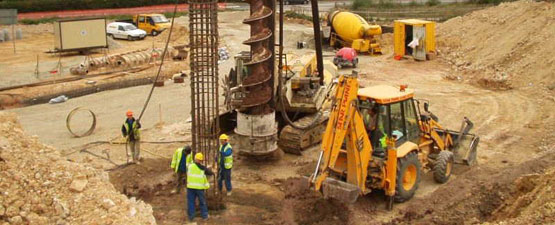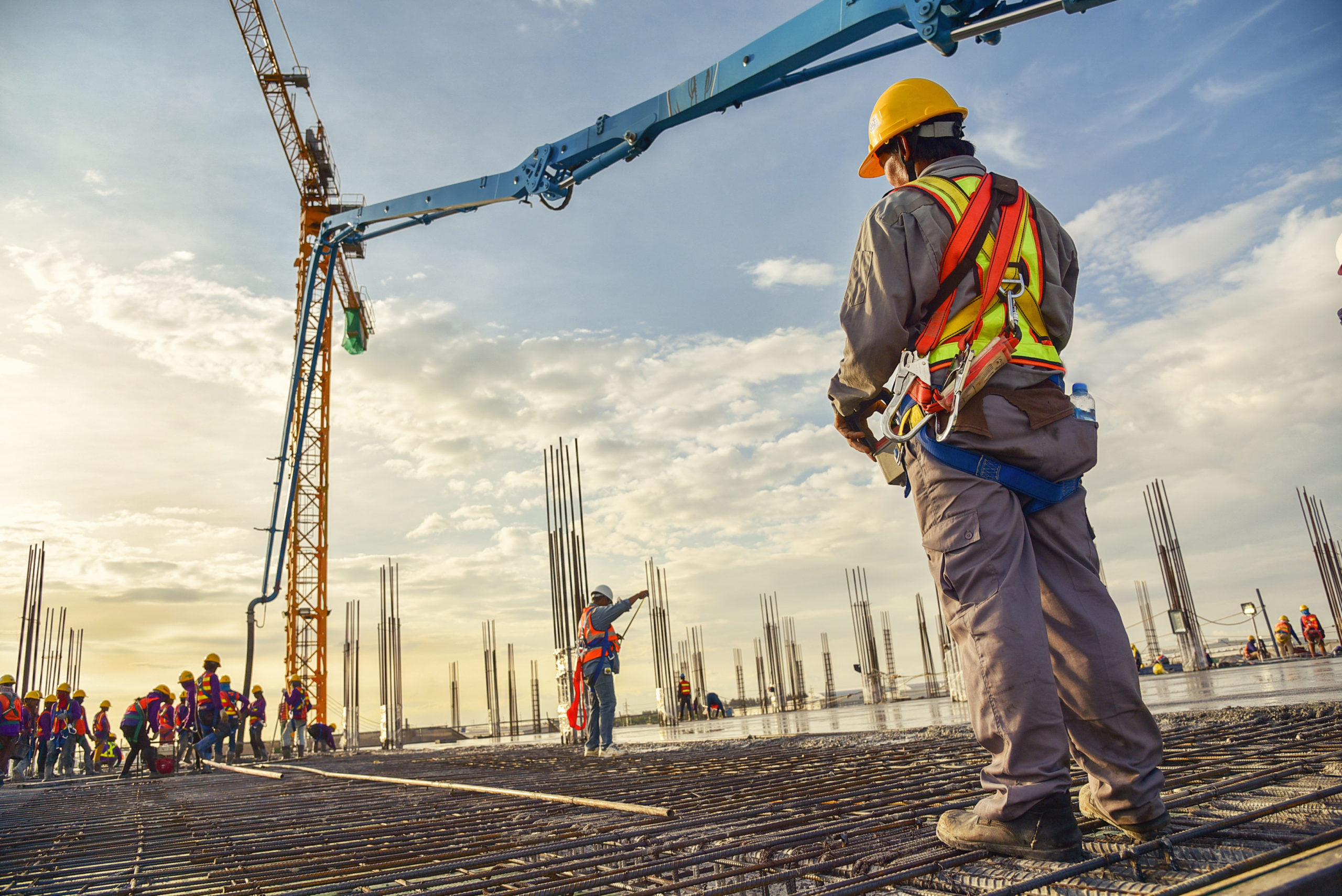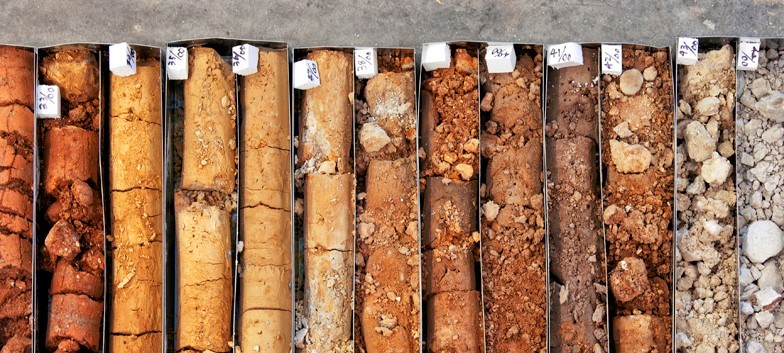Comprehensive Geotechnical Works to Make Sure Website Security
Wiki Article
A Thorough Exam of the Services Provided by Consulting Engineers in the Field of Geotechnical Engineering: From Website Investigation to Project Application
Consulting designers in geotechnical engineering play a pivotal function in the effective execution of building and construction jobs, beginning with comprehensive site investigations that disclose essential subsurface conditions. Their expertise extends to soil building evaluations, environmental effect analyses, and the cautious monitoring of task execution, making certain positioning with safety and security and sustainability requirements.Significance of Geotechnical Engineering
Geotechnical design is a crucial self-control that underpins the safety and sustainability of civil infrastructure projects. By recognizing the mechanical behavior of soil and rock products, geotechnical engineers analyze the viability of websites for different buildings, consisting of structures, bridges, and dams. This fundamental analysis ensures that frameworks can hold up against environmental aspects and lots without experiencing failing.The value of geotechnical engineering expands beyond mere architectural safety and security; it likewise includes ecological stewardship. Appropriate geotechnical analyses add to lessening the environmental influence of building. Through mindful examination of dirt residential properties and groundwater conditions, engineers can design structures and preserving frameworks that mitigate risks such as erosion and landslides, advertising long-lasting security.
In addition, geotechnical engineering plays a crucial function in task price administration. geotechnical works. By determining potential concerns early in the design phase, designers can suggest appropriate solutions, thus preventing expensive hold-ups and redesigns during construction. This proactive method not just boosts project performance yet likewise considerably reduces dangers connected with unpredicted site problems
Site Investigation Techniques
Reliable site investigation strategies are vital for collecting precise data about subsurface conditions prior to construction. These strategies assist in the understanding of the geological and hydrological setting, which is essential for ensuring the security and safety and security of suggested structures.Typical methods used in website examinations include borehole boring, which allows engineers to extract dirt samples at numerous midsts, offering insights into stratification and material types. On top of that, geophysical studies, such as seismic refraction and electrical resistivity, offer non-invasive methods to assess subsurface attributes over bigger locations. These approaches can assist recognize anomalies without comprehensive excavation.
Test pits are an additional beneficial method, offering straight observation of dirt layers and allowing in-situ testing. geotechnical works. This method is specifically helpful for shallow excavations and can aid evaluate groundwater levels. Cone infiltration examinations (CPT) are progressively made use of, as they give continual profiles of dirt resistance, which aids in figuring out dirt stamina and layering.
Each of these strategies plays a vital function in developing a thorough understanding of website problems, making it possible for consulting engineers to make informed choices and recommendations throughout the project lifecycle. Accurate data collection throughout the site investigation stage is essential to mitigating dangers and guaranteeing effective project application.
Dirt Residential Or Commercial Property Analysis

The analysis process typically includes a mix of research laboratory tests and area investigations. Secret properties such as shear toughness, compressibility, leaks in the structure, and moisture content are examined to identify the soil's suitability for construction purposes. Conventional examinations, including the Atterberg limits, Proctor compaction, and triaxial shear tests, are generally employed to collect information on dirt actions.
In enhancement geotechnical geologist to these tests, in-situ approaches such as the Criterion Penetration Test (SPT) and Cone Infiltration Test (CPT) supply important insights right into dirt stratigraphy and thickness. The outcomes of these assessments notify engineers about potential difficulties, such as soil liquefaction or settlement, enabling them to develop ideal mitigation techniques.
Environmental Influence Examination
Environmental effect analysis plays an important function in the preparation and implementation of design jobs, especially in geotechnical design. This procedure involves assessing the possible environmental consequences of suggested projects on soil, water, air quality, and surrounding ecosystems. Consulting designers make use of different techniques, consisting of website evaluations, modeling, and field research studies, to recognize and evaluate these impacts.The examination typically begins with the identification of standard environmental problems, which functions as a reference for anticipating possible adjustments. Engineers assess aspects such as disintegration, groundwater contamination, and environment interruption, ensuring that all relevant environmental regulations and standards are stuck to throughout the task lifecycle. Stakeholder involvement is additionally an important component of the examination process, as it promotes interaction between job developers, local areas, and governing bodies.
Moreover, mitigation approaches are created to deal with determined influences, allowing engineers to recommend options or modifications to forecast designs that improve sustainability. This proactive technique not only minimizes negative results on the setting yet also advertises public count on and conformity with environmental legislation. Eventually, effective ecological influence analysis enhances the general honesty and stability of geotechnical engineering jobs, supporting responsible growth techniques.
Job Execution and Monitoring

Surveillance is a necessary element of project implementation. Engineers make use of numerous techniques, such as instrumentation and field examinations, to assess soil actions and architectural feedbacks in real-time. This continuous monitoring allows the recognition of any kind of inconsistencies from anticipated performance, enabling for prompt treatments to minimize risks.
Moreover, speaking with engineers preserve open communication with professionals and stakeholders throughout the procedure. Normal site examinations and development reports make certain that all celebrations are notified about project status and any arising worries. By promoting cooperation and transparency, seeking advice from designers promote a more effective execution procedure, thereby boosting task outcomes.
Ultimately, effective project execution and surveillance not just maintain safety and quality criteria yet additionally add to the overall success of geotechnical jobs, ensuring they satisfy their designated objectives sustainably and sensibly.

Conclusion
In conclusion, the role of speaking with engineers in geotechnical design includes an important sequence of services that make certain job success. Ultimately, the complex payments of speaking with designers are necessary in attending to the intricacies of geotechnical obstacles in modern-day engineering projects.Report this wiki page